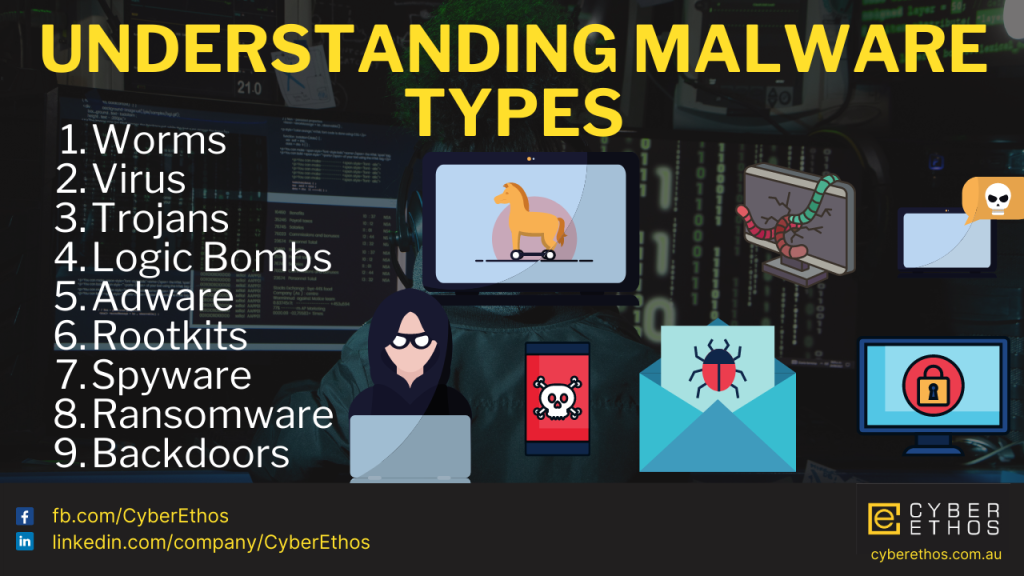
HOW DO YOU PROTECT AWS EC2 INSTANCES FROM SECURITY THREATS AND UNAUTHORISED ACCESS?
a. Patch Management: Apply security patches and upgrades to EC2 instances on a regular basis to reduce vulnerabilities and protect them from known security threats.

Malware, a contraction of “malicious software,” is any program created with the express purpose of damaging, exploiting, or gaining unauthorized access to computer systems or networks. Malware comes in a variety of forms, each with a unique function and set of traits. Here are a few prevalent malware types:
Viruses: When safe programmes or files are executed, viruses attach themselves to them and begin to proliferate. They often require user engagement to spread and have the potential to corrupt or damage data as well as spread to other files or systems.
Worms: Self-replicating malware that spreads throughout networks and computer systems with no user involvement is known as a worm. They can quickly enter and infect a number of devices by taking advantage of vulnerabilities.
Trojans:Trojans, often known as “Trojan Horses,” are malicious programmes or files that masquerade as genuine ones. Usually, they employ social engineering to get consumers to install them. Once engaged, they have the ability to steal data, open doors for intruders, and perform other nefarious deeds.
Ransomware: Ransomware is a type of cyberattack that encrypts a victim’s files or complete system and then demands a ransom, typically paid in cryptocurrency, in exchange for the decryption key. It’s a sort of extortion that can seriously damage finances and cause data loss.
Spyware:Spyware is software that tracks a user’s movements without that user’s knowledge or consent. It has the ability to record keystrokes, take screenshots, track online browsing patterns, and send this information to a distant attacker.
Adware: Adware is software that shows unwanted advertisements on a user’s device, frequently in the form of pop-ups or banners. Adware can be exceedingly unpleasant and have an adverse impact on system performance, although not being as destructive as other forms of malware.
Rootkits: Malware that hides in plain sight within an operating system, making detection and removal challenging. They frequently give unauthorised people access to and control over a vulnerable system.
Keyloggers: By recording a user’s keystrokes, keyloggers provide hackers access to private data including usernames, passwords, and credit card details.
Botnets: A botnet is a network of compromised computers under the direction of a botmaster, or central server. Large-scale cyberattacks, such as Distributed Denial of Service (DDoS) attacks, frequently use them.
Backdoors: Backdoors are covert access points or flaws that attackers knowingly leave behind in order to obtain access to a compromised system or network in the future.
Fileless Malware: This type of malware doesn’t use conventional executable files; instead, it lives in system memory, making it difficult to find and delete.
Mobile malware: There are many different varieties of malware that target mobile devices, such as smartphones and tablets, including mobile viruses, Trojans, and spyware that aim to infect mobile operating systems.
Macroviruses: When a user opens an infected file, these viruses can run harmful code because they target the macro scripts in documents, spreadsheets, and other types of files.
Polymorphic Malware: Polymorphic malware is difficult for antivirus programmes to identify because it alters its code or appearance each time it infects a new system.
Multipartite malware :Multipartite malwarecombines traits from other malware subtypes, making it more nimble and challenging to eradicate.
Firmware-level malware: gives hackers long-term control of a device by infecting the firmware of hardware parts like BIOS or UEFI.
IoT malware: As the Internet of Things (IoT) has expanded, malware that targets smart devices, such as cameras and thermostats, has increased in frequency.
New malware types and attack methods appear frequently as a result of the ongoing evolution of malware. It takes current antivirus software, frequent software upgrades, and user awareness of potential dangers to protect your devices and networks against malware.

a. Patch Management: Apply security patches and upgrades to EC2 instances on a regular basis to reduce vulnerabilities and protect them from known security threats.

Network forensic tools play a critical role in cybersecurity forensics because professionals use them to investigate and analyze network traffic, discover, prevent, and respond to
